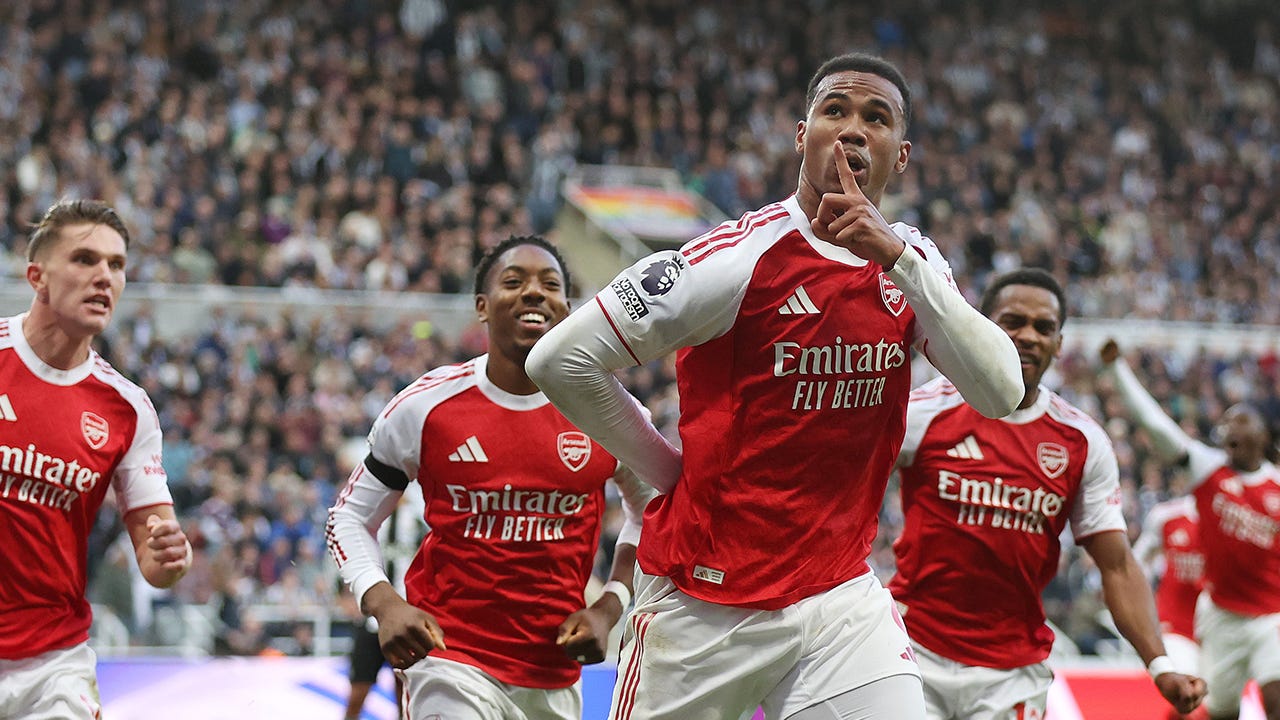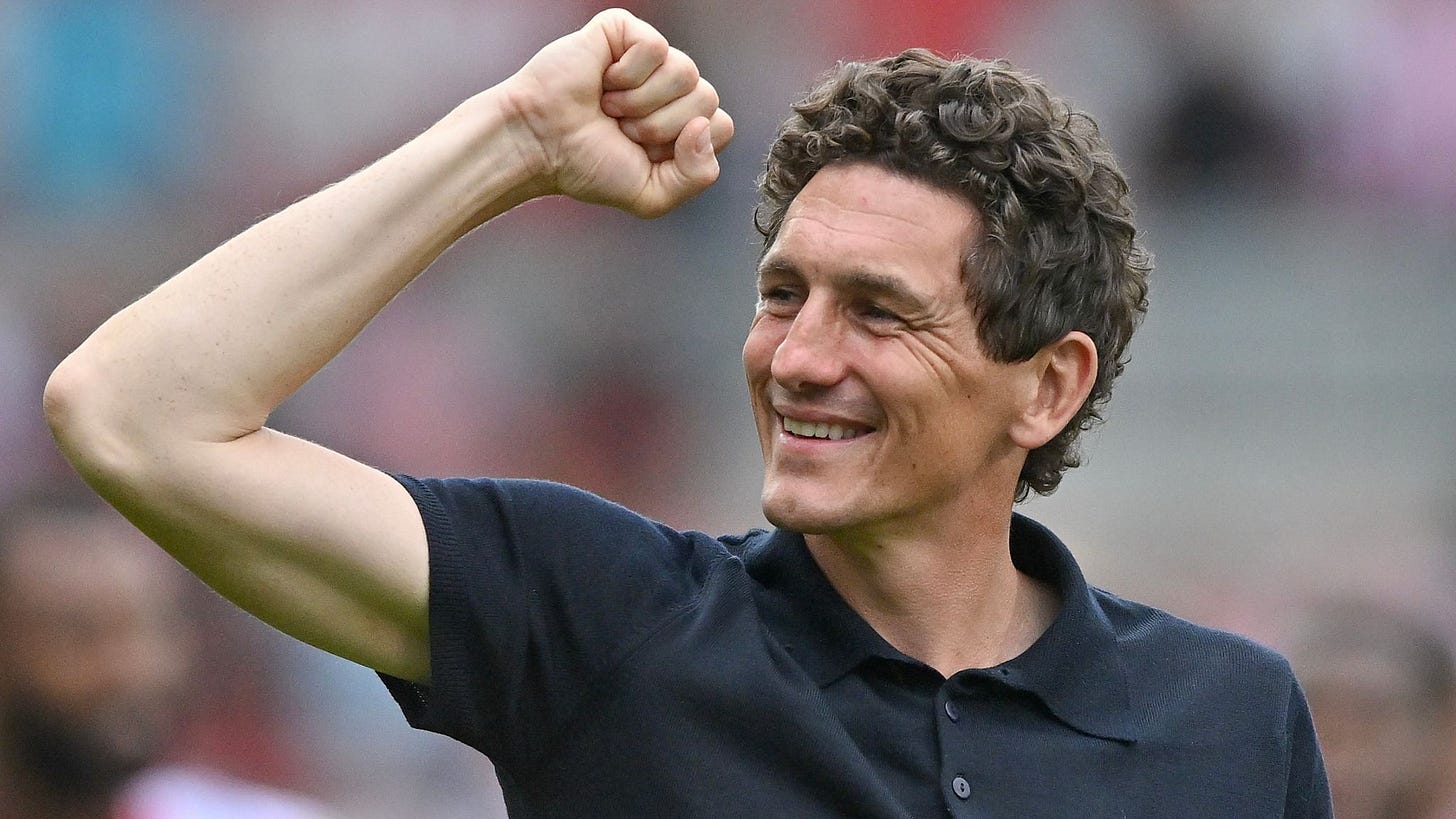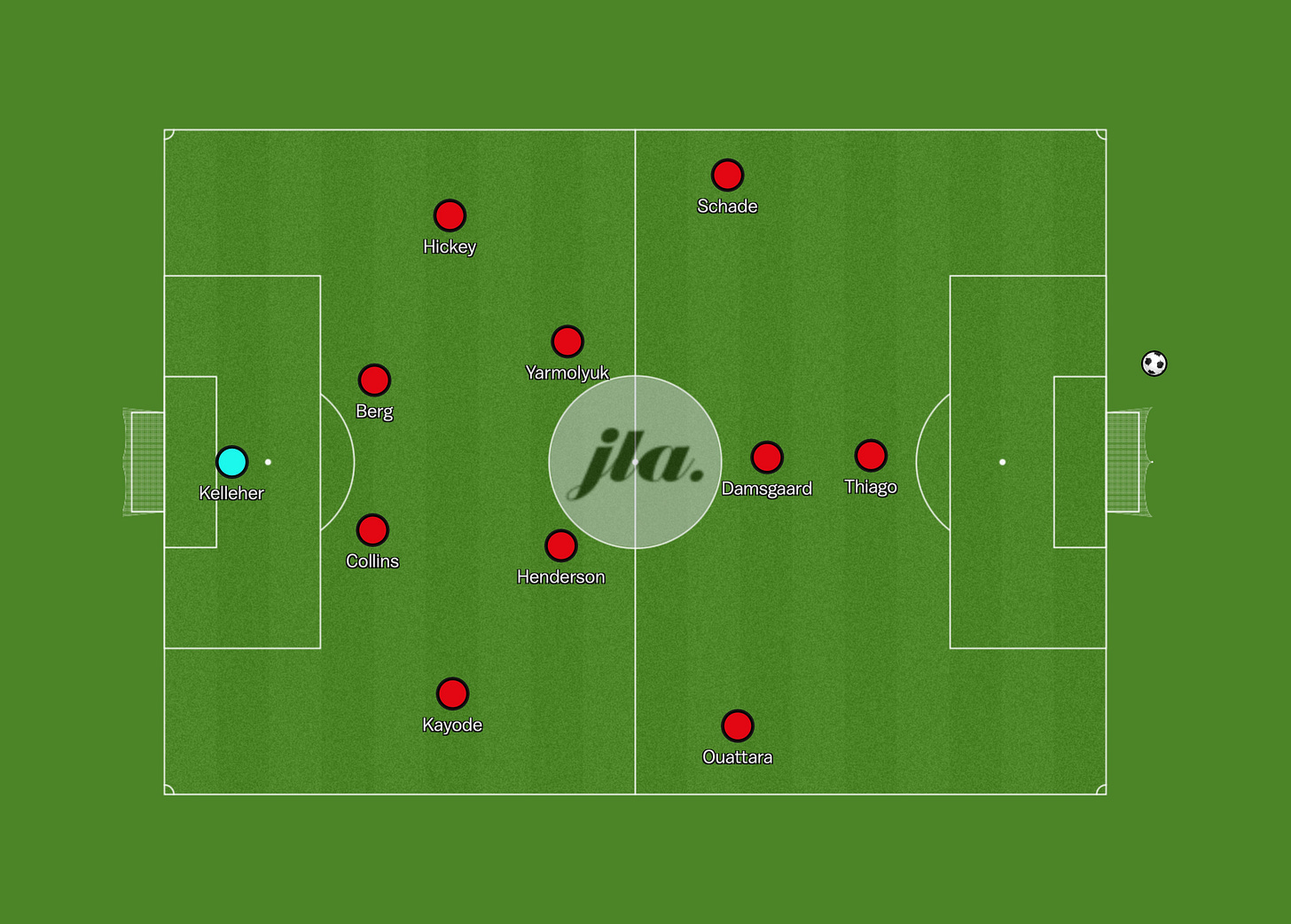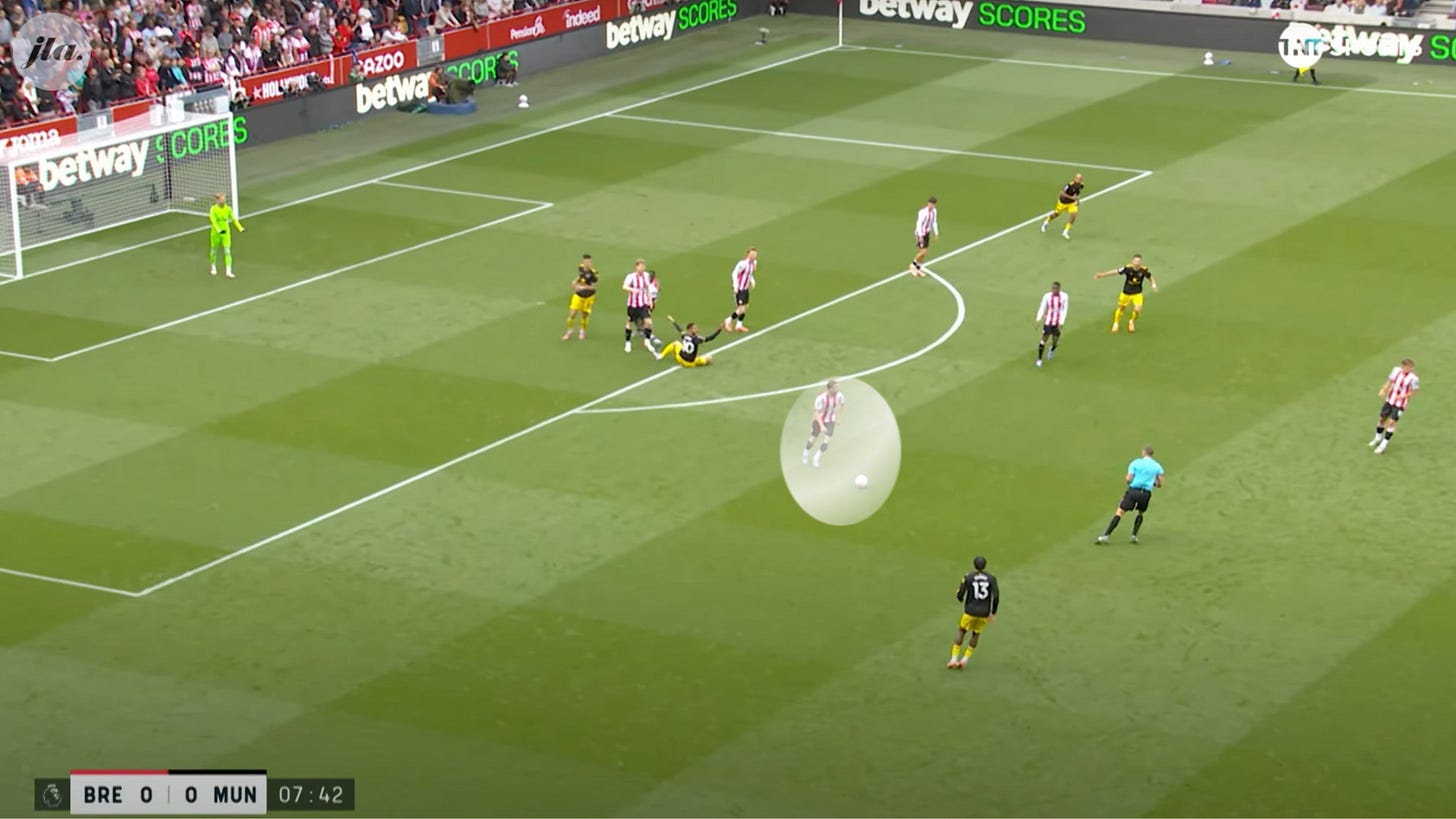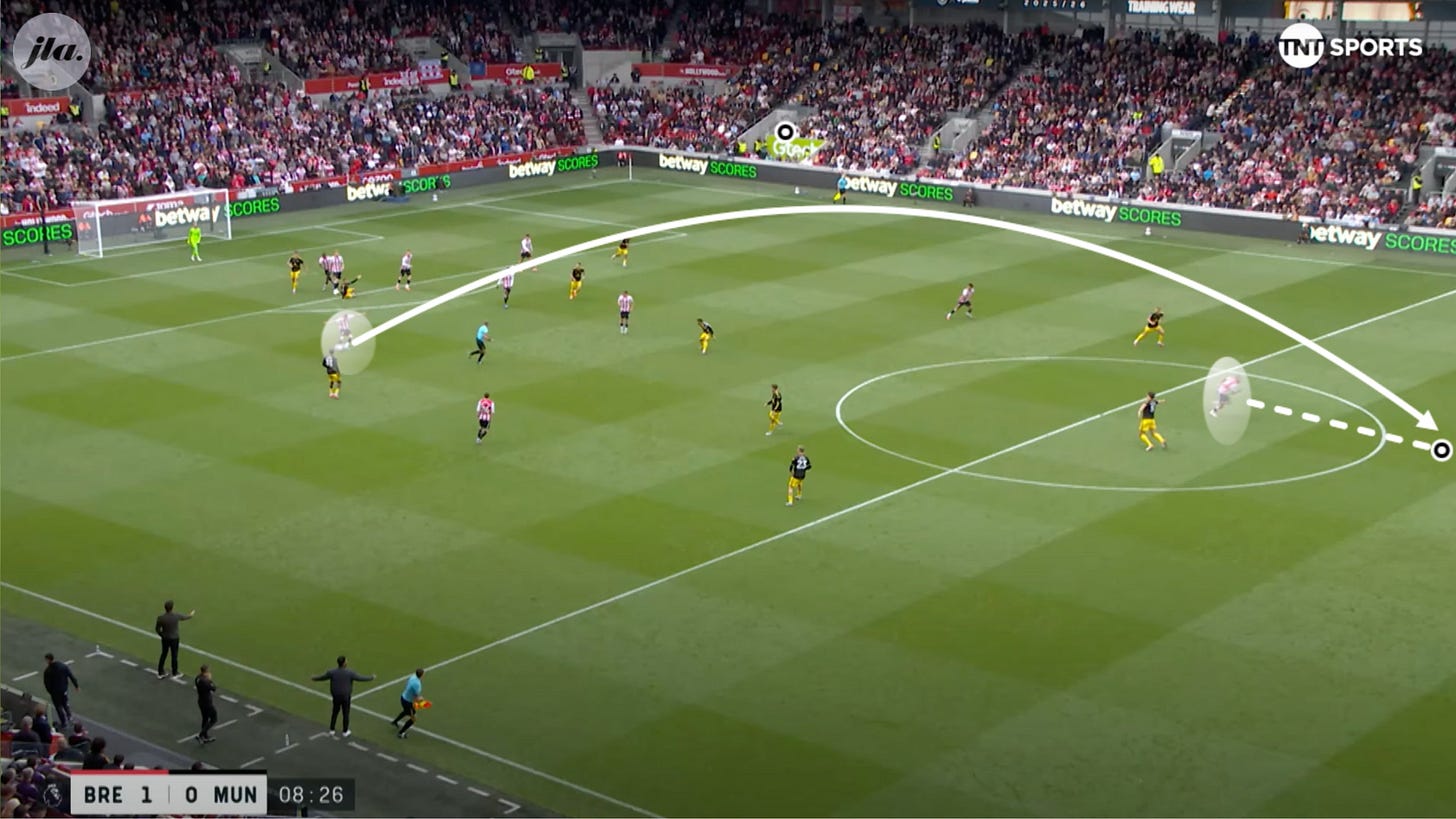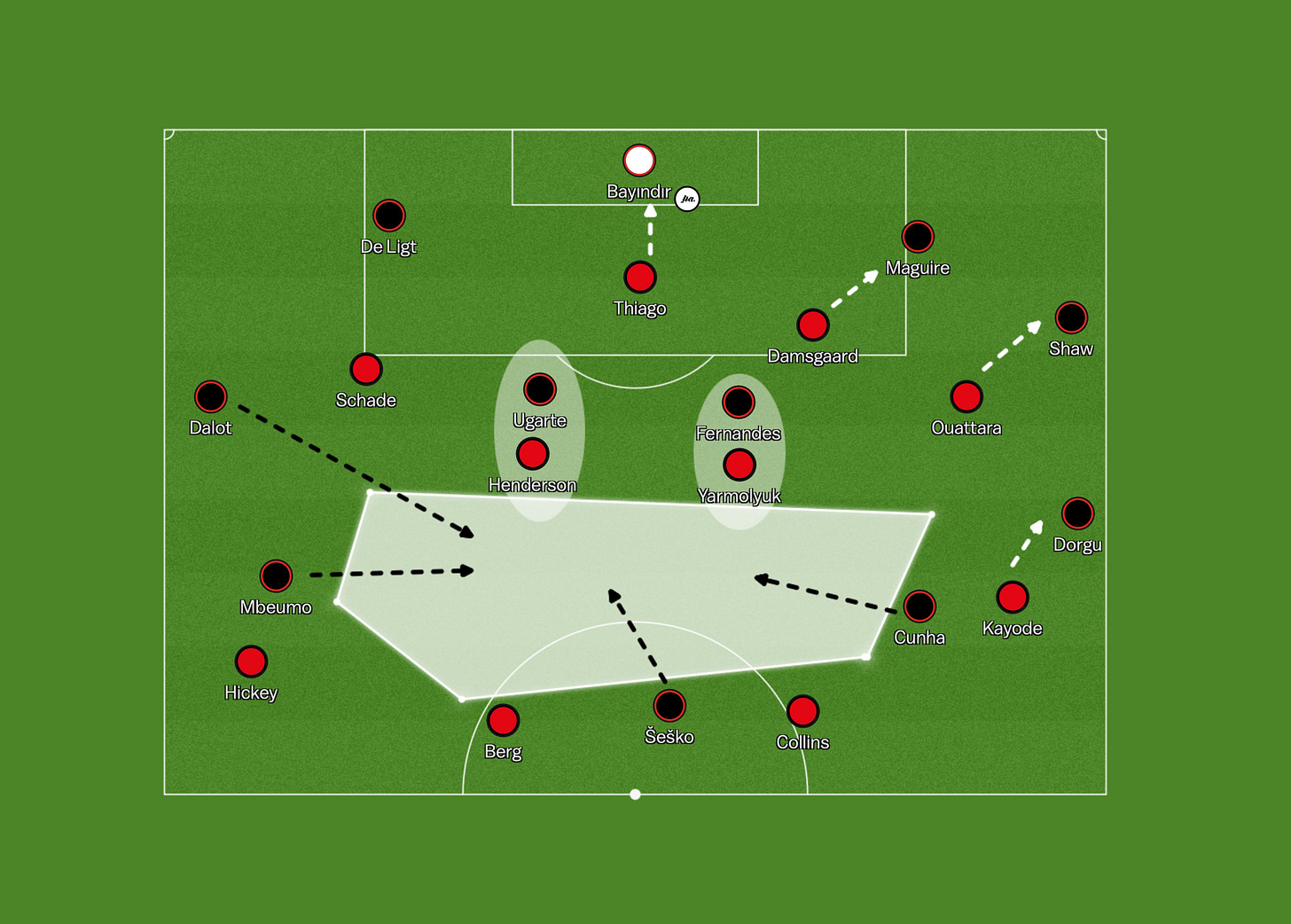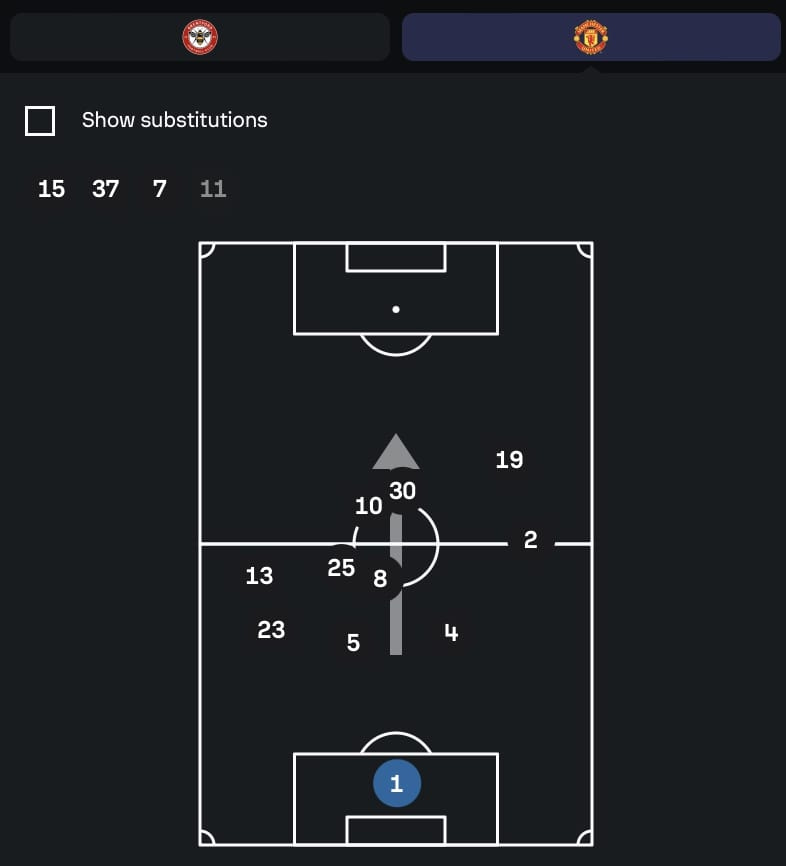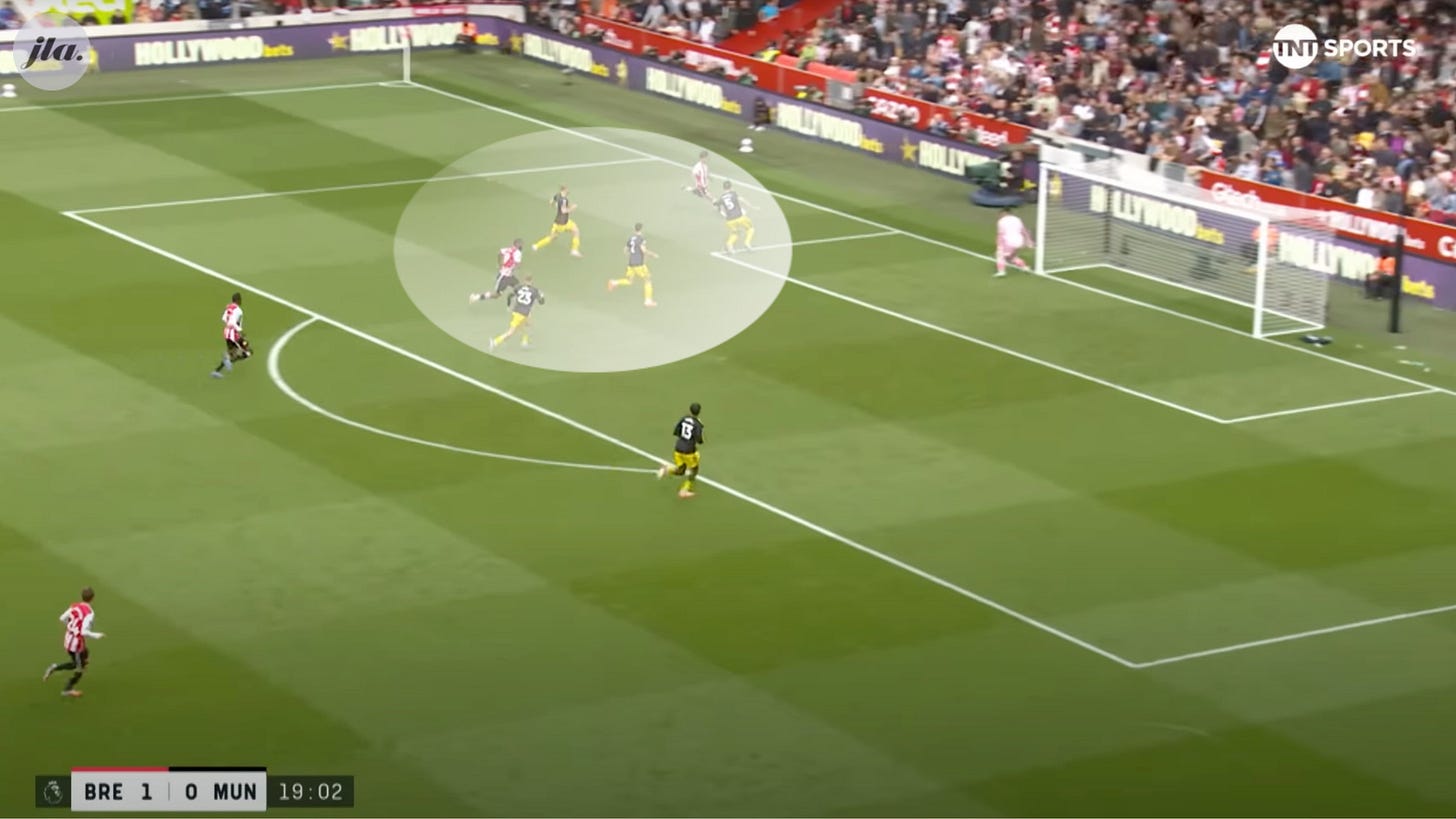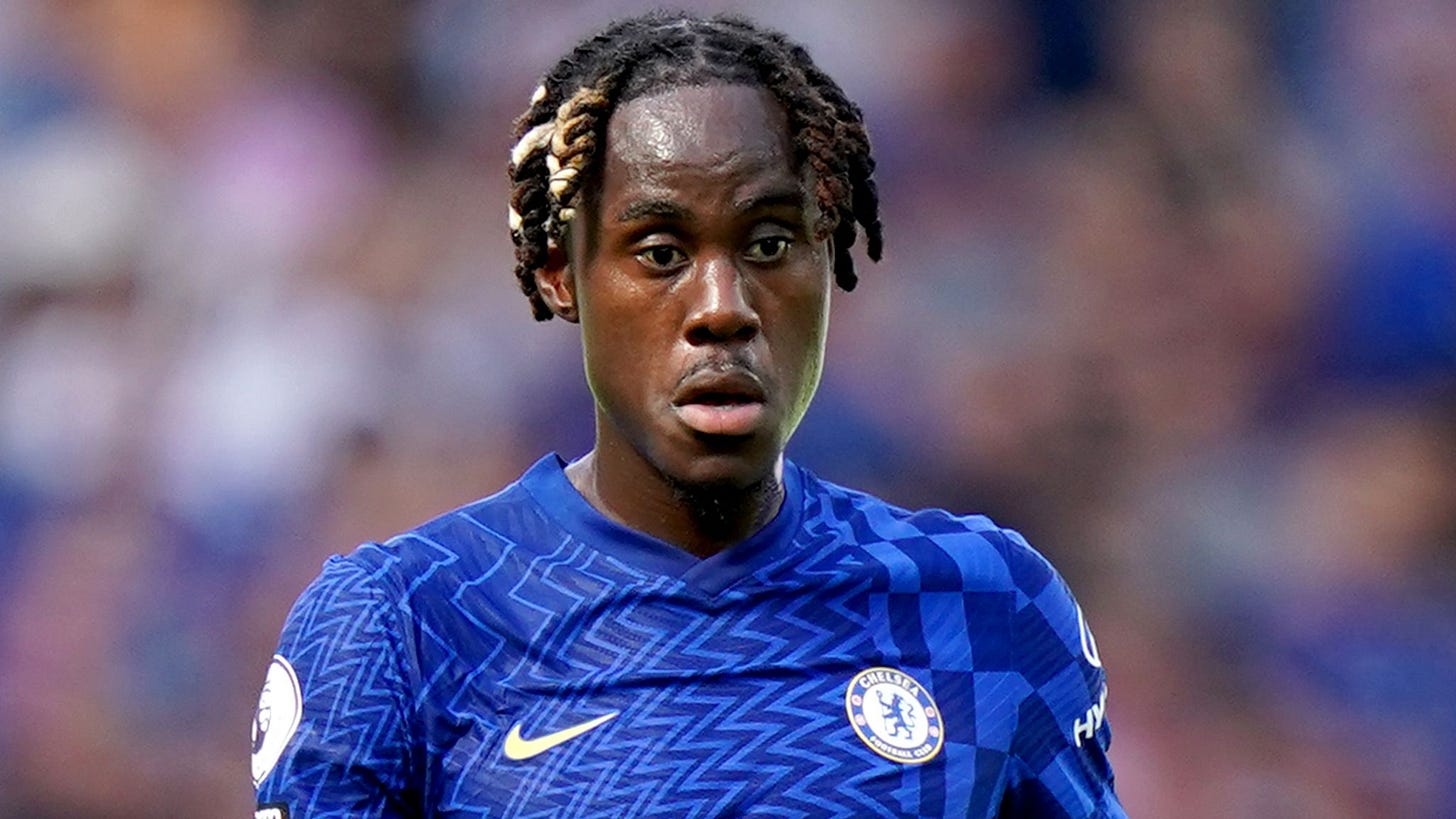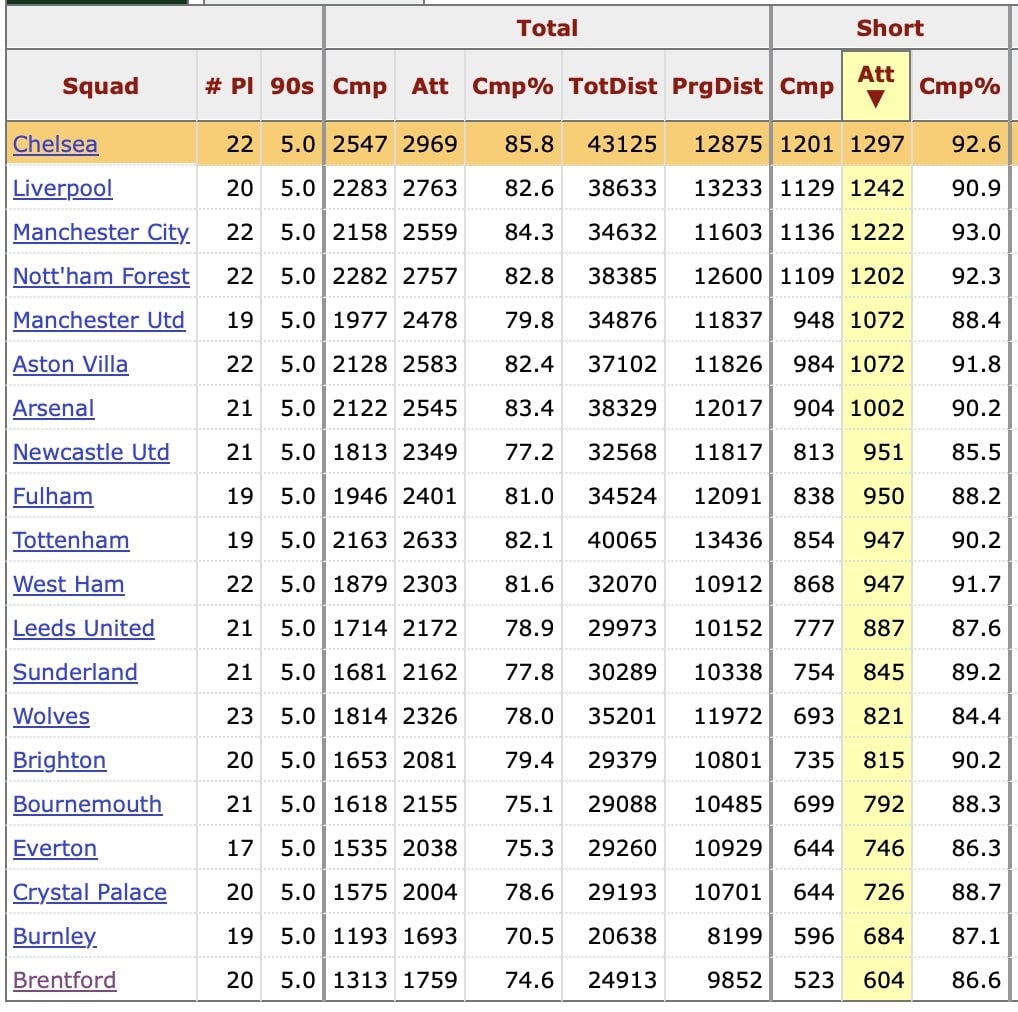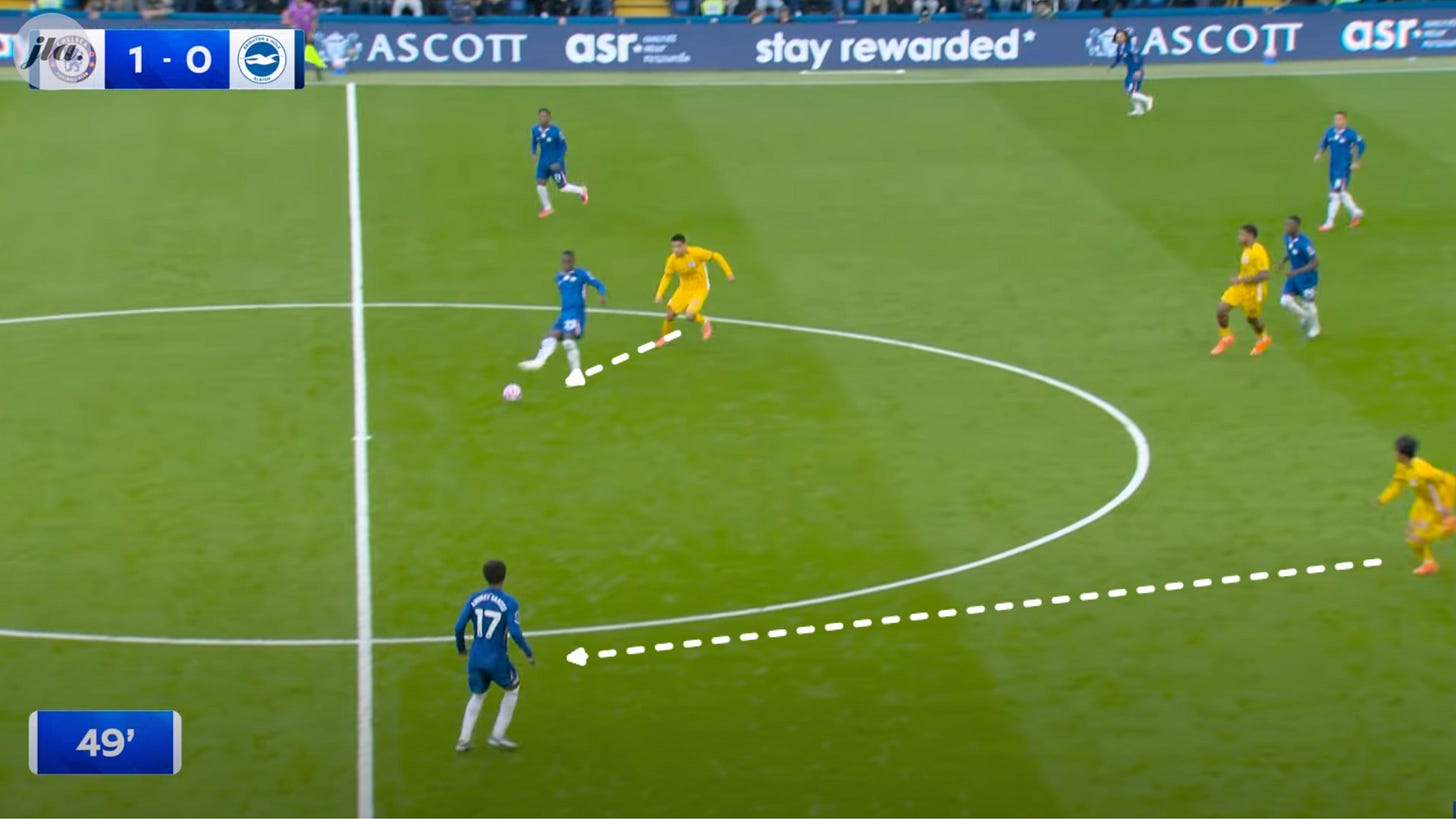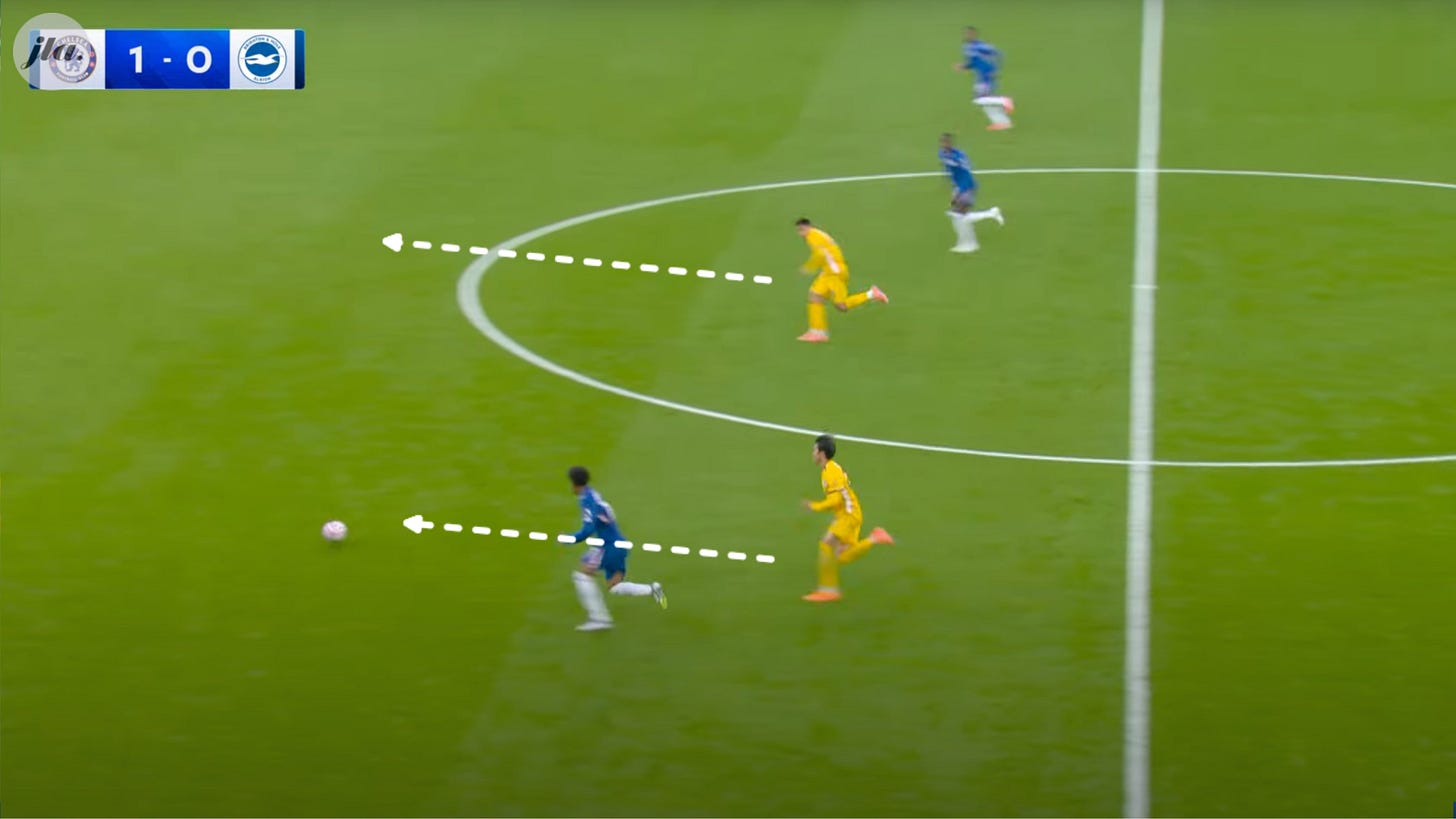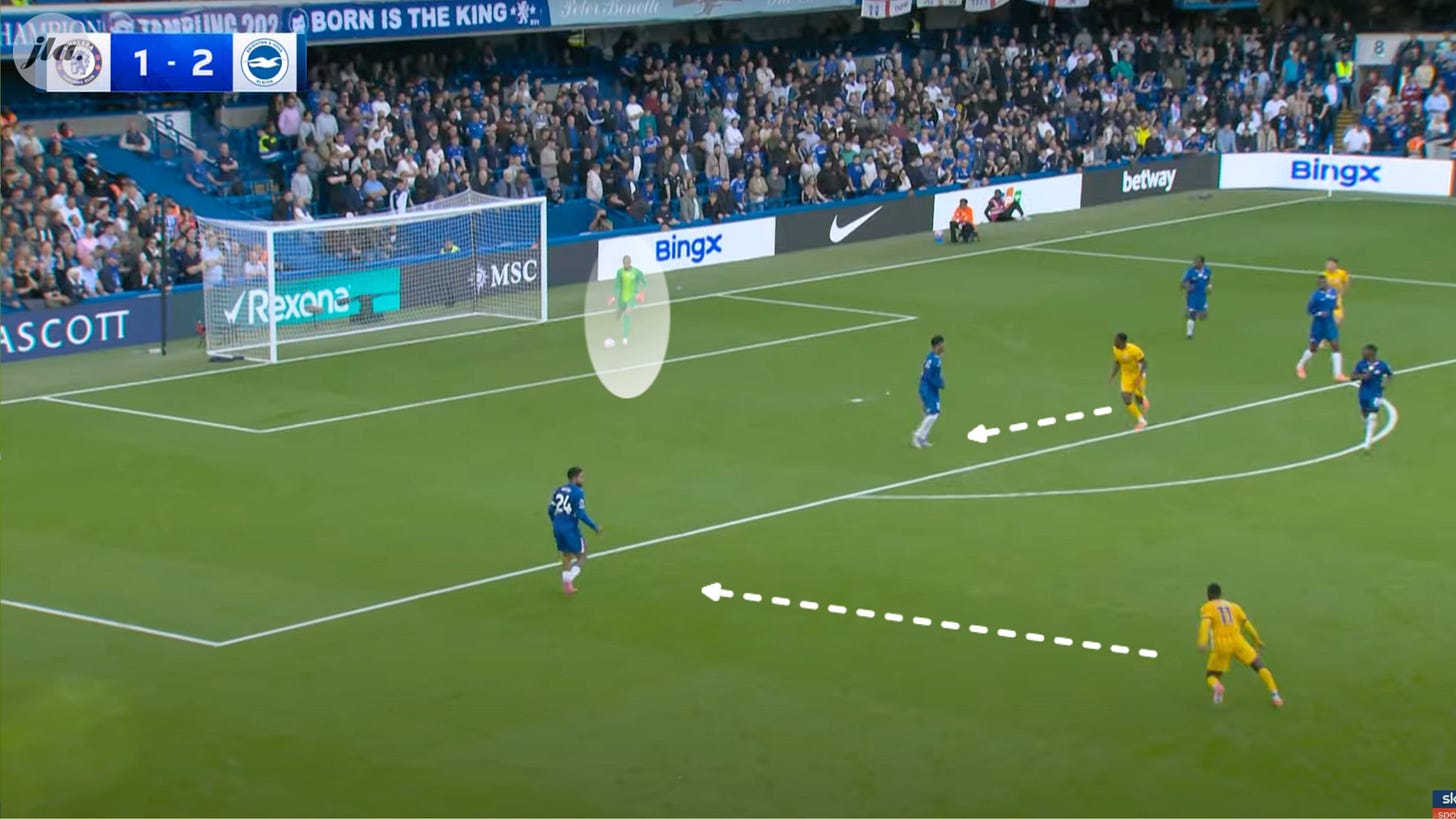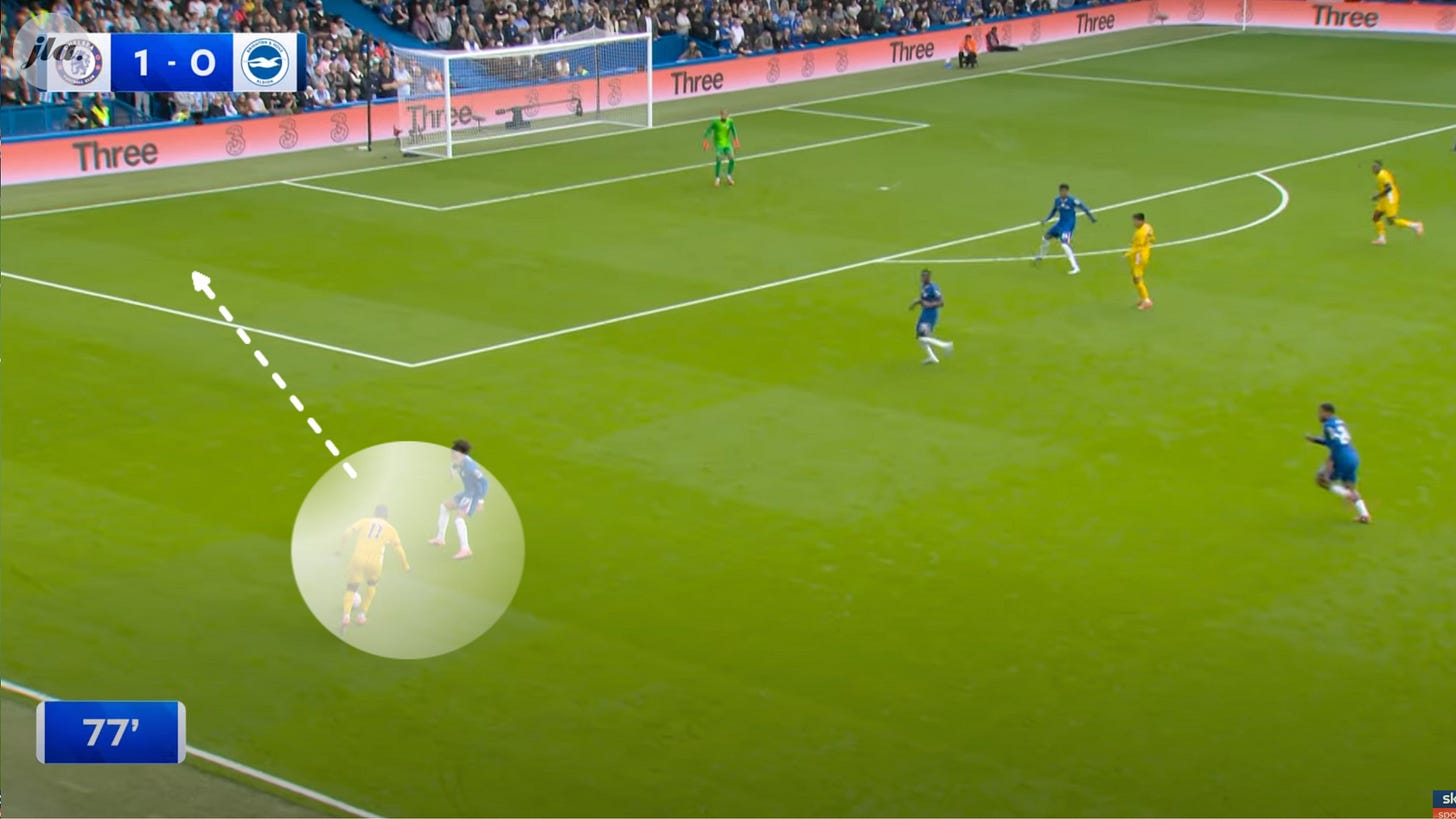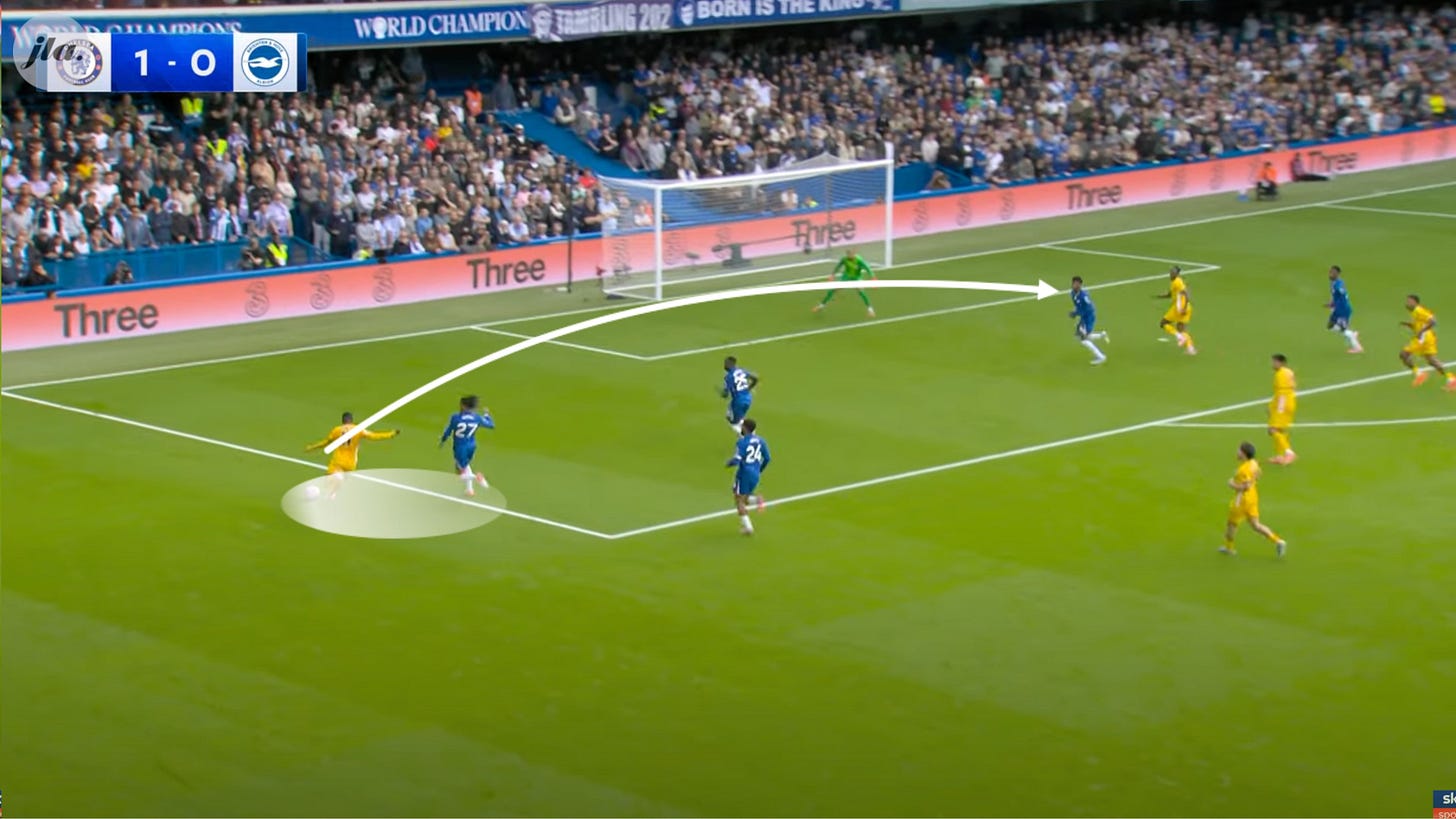Ruben’s Ropey Rhetoric and Arsenal’s Suffocation Pit: The Fallout.
Chelsea vs Brighton and Spurs vs Wolves also analysed.
On The Fallout this week:
• Brentford vs Man United
• Chelsea vs Brighton
• Tottenham vs Wolves
• Newcastle vs Arsenal
Brentford vs Man United
The focus of the tactical discussion surrounding Brentford after this game, I imagine, will be on their decisiveness and directness.
This is slightly misguided, however. Brentford are only able to play so directly, and successfully, because of their off-the-ball play; this is what I’d like to reiterate and investigate in this post-match analysis: how their out-of-possession work enabled them to dismantle Manchester United.
Brentford made two changes from their last showing against Fulham, resulting in a formational shift from a back-3 to a back-4.
The JLA Tactics Board Is Now Available… https://jlatacticsboard.com/
This change arises from Keith Andrews’ recognition of a key battle: Manchester United all season have struggled with control in the midfield, they have trouble progressing the ball through the press in the centre of the pitch. Swapping to a back-4 allows Brentford to overload central areas, hence controlling the midfield – and winning the key battle.
This tactical change was effective. Throughout the game, the duo of Henderson and Yarmolyuk operated very closely together; at times, you can see Henderson coordinating the positions of himself and Yarmolyuk, telling Yarmolyuk to stay at a shoelace distance.
Out of possession, this works because Henderson and Yarmolyuk, when functioning closely together, allow them to quickly shut down and press the opposing double pivot, Bruno Fernandes and Ugarte. This affords the Manchester United midfield no time to take a breath and make a pass. The pressing structure, during Manchester United’s build-up, looked like this:
The aggressiveness of this press, often finding Henderson and Yarmolyuk in high positions, rattled and unnerved Manchester United, who were never able to dictate the ebb and flow of the game. The game, especially in the first half, consequently, was basketball-esque with no team really able to settle.
These common transitional phases, where the ball never seemed to be at rest – constantly moving – suited Brentford, who thrived on the chaos – granting them numerous opportunities to hit Manchester United on the break: the first ball after winning the ball back from the press was often played direct, straight over or around the Manchester United defenders who struggle defending facing the goal.
The three Brentford goals all arose from situations when the game was in transition. Henderson’s through-ball for the first goal is the perfect example of this.
Brentford win the ball back due to their aggressiveness and intensity; the ball falls to Henderson who straight away clips it over the Manchester United defenders:
Thiago’s brilliantly timed run (along with his equally brilliantly finished goal) led to the first goal and the blueprint for how Brentford will continue to exploit Manchester United’s vulnerabilities.
It is precisely these pressing structures that enable Brentford to play so decisively: win the ball, move it quickly and directly.
We must also pause to mention Brentford’s long throw-ins and corners. The throw-ins straight onto the head of the keeper always threatened and the corners, typically towards the backpost, created very solid chances even if they failed to convert them today.
To summarise: by pressing in fits and bursts, and through their quality set pieces, Brentford purposefully created uncertainty and precarity – managing to capitalise on this game state.
That they managed to hang onto the lead (something they haven’t done this season) by having the wingers tracking back and marking the opposing wing-backs, is extremely optimistic and further proof that they are very likely to stay up.
Ruben’s Ropey Rhetoric
There is often a simplification and exaggeration of the role of formations in popular football analysis: supposedly, all of Manchester United’s problems (leaky stadium included) will be solved if they switch from a back-3 to a back-4.
In contemporary football, where formations are dynamic and ever-changing, most if not all teams function with a back-3 and back-4 depending on the game state.
If not the formation, then what are Manchester United’s problems? They were on full display today.
You see, the frustration with Manchester United is that everyone, the manager included, can see what the problem is, and yet it never seems to be rectified from game-to-game. And it was the same problem again in this game: getting overrun in midfield and the profiles of the defenders.
Let’s start with the midfield. We’ve seen that Brentford purposely targeted Manchester United’s midfield through their shift of formation; Brentford, consequently, managed to overrun the midfield.
These are the average positions at half-time:
There is, evidently, a huge space between the double pivot and the attackers – meaning that progressing the ball central through the press is more challenging. The depth of the pivot, (25) and (8), is due to Brentford’s aggressive press which forces the Manchester United midfielders deeper in order to receive the ball.
However, because Brentford are committing their midfielders high up the pitch, there is space open to be exploited behind them.
This would allow through-the-lines balls that would help initiate Manchester United progressing the ball up the pitch.
After half-time, the average positions change, as more of these players move into the free space indicated above:
But, despite this, Manchester United still didn’t take enough advantage of this free space: if this is due to the players not enacting the manager’s rubric or the failure of Amorim to see this, we can only speculate.
Another problem area is the profile of the defenders.
Starting Maguire, on paper, makes sense; Brentford are a team that rely heavily on balls into the box, Harry Maguire is great at winning balls in the box.
However, the problem is that Amorim’s system requires defenders to be good on the ball and, due to the highline, confident at defending facing the goal: De Ligt and Maguire are neither. They neither play enough line-breaking passes nor avoid getting positionally caught out – when defending facing the goal, they end up in no man’s land.
For the second goal, four of the back five run towards the ball – opening up the space that causes the goal. Rookie mistakes.
Whether this underperforming Manchester United is due to the players or the manager, as we said before, is hard to say. What isn’t hard to say is that Amorim’s position as head coach is looking increasingly tenuous as the games go on.
Chelsea vs Brighton
In this age of multiclub ownership, you’d be forgiven for thinking that Brighton were (another) one of Chelsea’s feeder clubs, with four of Chelsea’s starting eleven being signed from Brighton. If you’d watched the game, however, you’d realise that this friendship is only fiscal in nature – there is no love lost between the players and the fans in this fiery affair.
The Typical Ten
Chelsea fans might be worried. The problems appear plentiful.
Chelsea have only won one in the last five games, the solitary win coming from a 2-1 beating of Lincoln City in the Carabao Cup. The subsequent substitutions and tactical tweaks after his team’s red cards have also come under criticism: seemingly too naïve and conservative.
Furthermore, it seems to have become a trend for Chelsea to finish the game with 10 men – having done so similarly against Manchester United in the last Premier League game. Is this a squad-wide disciplinary issue?
And, to top it off, Chelsea are undergoing an injury crisis, where their first four choices for centre backs are injured or suspended. And they play Liverpool next week.
Unfortunately for Chelsea, a lot of these problems were on full display against Brighton. In this piece, I primarily want to focus on Maresca’s game management, as this was, I contend, the most critical factor for their loss.
Maresca’s style involves a lot of short passes in the build-up. So far this season, Chelsea have attempted the most short passes out of any other team:
Stylistically, this is all well and good – what’s pertinent, however, is when teams choose to pass short. In this game, Chelsea were punished twice for this tactic: either, it’s a problem of discernment, for not choosing the right time to pass short – or an implicit risk of a style of play that commits to passing short.
In the lead-up to the first goal, Santos (17), receives the ball from a short pass – the Brighton attack, at this point, follows their press.
Obviously, a Premier League midfielder should make light work of this pass (as we can see above) and easily control the ball – but, this time, Santos doesn’t – taking a heavy touch that leads to Chalobah being sent off.
Poor individual play from Santos, to be sure, but that’s the risk of committing to playing short the majority of the time – even when the attackers are bearing down.
For the final goal, we see the same thing: an inopportune time to play short.
Chelsea are chasing a goal with minutes remaining, yet they decide to play the ball short – even though the defence hasn’t found their set positions and are positionally in disarray.
Chelsea fans better hope that these moments of madness from the players are the players acting out of turn, rather than being a condition of the football that Maresca wants to play; for we’ve seen all too recently how long tactically inflexible managers last.
He’s Mint, Eh?
Brighton’s tactics (before and after the red card) were the same: isolate the full backs and put the ball into the box. This was coupled with a semi-aggressive press. They took a little while to warm up, but eventually, Brighton started to threaten the wide areas, specifically targeting Cucurella.
We know they like to single out the fullbacks, and we also know that they are then very good at going past them. After all, they have the perfect players for this in Mitoma and Minteh. This season, they’ve completed the joint most take-ons:
For this game, their main outlet for take-ons was Minteh, who was (and sorry about the cliche but apt description) electric.
For the first Brighton goal, Minteh squares up Gusto – who didn’t look like he was enjoying marking Minteh.
Minteh’s turn of pace takes him easily past Gusto, then he puts in a fantastic cross for Welbeck to finish.
Minteh did this on both flanks for the whole of the game.
It’s always hard, in light of a red card for the opposition team, to judge how well they have played – considering they play against 10 men.
The conclusions we can draw, however, are twofold: first, this preeminent tactic of utilising their tricky wingers will be (and will continue to be) successful – their wingers are of such a quality that they can go past nearly all Premier League fullbacks; second, Hurzeler’s ability to change the course of the game through substitutions (two subs scored and two other subs assisted) is excellent and displays his tactical flexibility and astuteness.
As for the second point about Hurzeler – maybe Maresca should take notes.




